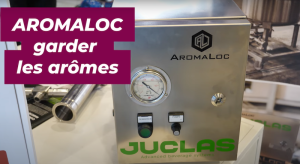As we go forward, no matter where you’re competing in the industry, market share is going to become more important than ever…. If you want to grow, who are you going to take the business from? It’s not going to be that you can grow just because the total market’s growing.
That is the crucial take-away from an article penned by Peter Witham in Wine Business Monthly. It’s going to become increasingly important for winemakers to do everything they can to improve their products’ positioning vis-a-vis the competition — that’s where AromaLoc’s patented technology can be not just a game changer, but for some wineries, a game saver.
Here’s the balance of Witham’s article:
While top-line numbers paint a picture of an industry that’s weathering the COVID-19 pandemic, the latest update from Gomberg, Frederikson & Associates indicates that smaller labels face tough times.
“Some reports say that e-commerce has made up for direct tasting room sales,” said GFA editor Jon Moramarco during a webinar on December 9. “I think that’s true for some wineries, but not all of the 10,000-plus wineries in the country.”
Data for the first nine months of the year indicate that smaller wineries have been especially affected.
California wine shipments declined more than 6 percent in the second quarter, according to Moramarco, then recovered in the third quarter. During the first nine months of the year, shipments within the state fell 14 percent versus a year earlier while out-of-state shipments increased 2 percent. This resulted in a net decrease of 1 percent, for a total volume of 185 million 9L cases.
Moramarco said the decline within California was driven by reduced activity at wineries, primarily smaller producers.
“I do believe a part of that downturn in California is winery sales being impacted through reduced through new consumer visits,” he said.
It’s a similar story in Oregon and Washington.
While Oregon looks like it’s doing very well, posting a 22.5 percent increase in shipments to nearly 2.3 million cases in the first nine months of the year, the numbers are skewed by co-pack operations at Full Sail Brewing Co. Excluding Full Sail, shipments in the period dropped 10.6 percent to slightly north of 1.5 million cases.
A similar phenomenon has played out in Washington, where total shipments fell by an estimated 9 percent in the nine months ended September. While shipments from Ste. Michelle Wine Estates drove about half of the loss, the smaller wineries that account for a third of the state’s production made up the other half of the loss.
“Part of it is being impacted by small wineries with limited tasting room operations,” he said.
The disproportionate impact of the downturn on smaller wineries, which suffered yet another blow from renewed restrictions over Thanksgiving, has many wondering what 2021 holds. Moramarco’s outlook was sobering.
“By the late second quarter next year we’ll be operating in what people are calling a new normal,” he said. “[But] it’s not going to quite be the market that we’ve been used to for so many years. And, bluntly, I think that’ll hurt smaller wineries, smaller producers, more than big producers.”
This is because restaurants, which sold off stock and pared wine lists during the pandemic, will have little appetite to take on new products.
“There’s going to be fewer restaurants and fewer wine list placements or by-the-glass opportunities, so people are going to have to work harder,” Moramarco explained.
The straitened conditions promise a more competitive market that will force wineries to hunt for growth rather than expecting it to arrive at their tasting rooms.
“As we go forward, no matter where you’re competing in the industry, market share is going to become more important than ever,” he said. “If you want to grow, who are you going to take the business from? It’s not going to be that you can grow just because the total market’s growing.”
Monthly




